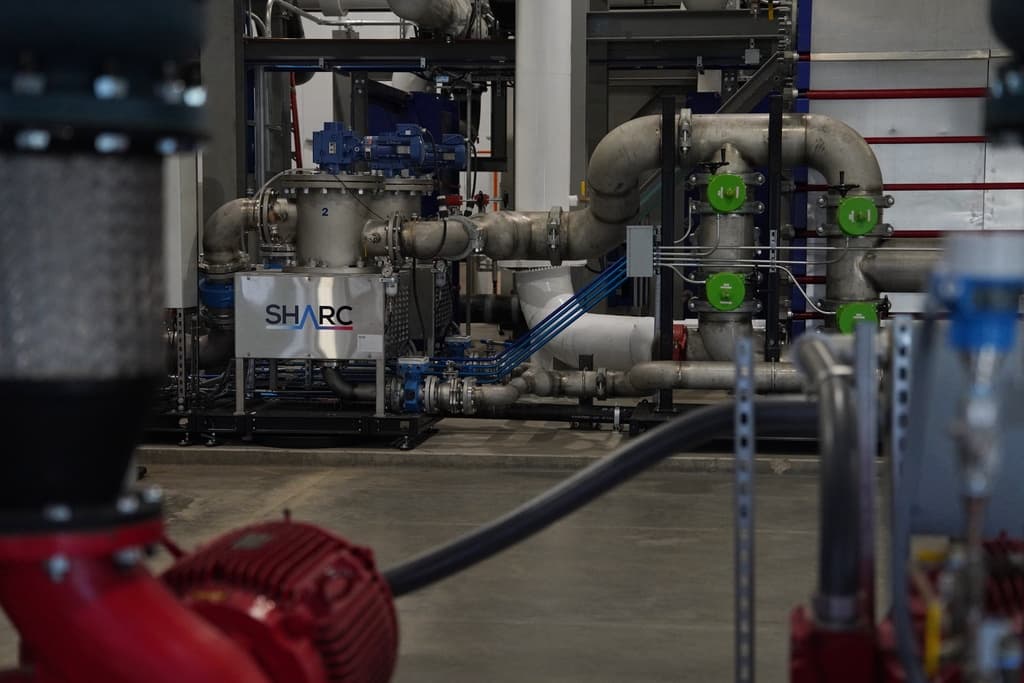The new aerial fire fighting research center in Rifle opened this week with a ribbon cutting. Melissa Lineberger is the director of the Center of Excellence for Advanced Technology Aerial Firefighting, and recently spoke with KDNK’s Amy Hadden Marsh about her experience with wildfires and her vision for the program.
LINEBERGER: I started doing policy work for the division about two years ago and got to learn all about not only wildland fire, but structure fire and some of the prevention work that the division does. I’ve been really in touch with the Colorado fire fighting community, I’ve gotten to make a lot of really great connections, and I’ve found that I really have a passion for this issue that affects our state every year.
AHM: I don’t know many people who are involved with firefighting or fire prevention or fire research who don’t have this passion for it. What is it that grabs you about working with wildfire?
LINEBERGER: Everybody loves firefighters. They have this great job where all they do is good. And so getting to work with that community, and getting to bring things to that community that are going to help them do their job more effectively and safer is a huge privilege.
AHM: Exactly what will your duties be?
LINEBERGER: As the director, I’ll be responsible for the day-to-day operations of the center, ensuring that we are meeting our goals as far as completing projects on time, communicating with the legislature to ensure that they understand what we’re doing, and then also being involved as a spokesperson to the Colorado firefighting community, make sure that they understand when we have a new tactic, technique or procedure, understand how that can be implemented and how that can help them, and then provide whatever training is necessary. [Are] demonstrations the best way to go? Or is it sitting down in a classroom and having them see the process that we went through to get to a solution? I’ll be in charge of overseeing all that and making sure the staff is as excited as I am for this opportunity and is moving forward in the right direction.
AHM: What projects are you looking at right now?
LINEBERGER: Some of the initial projects that I’ve already started doing research on [are] night operations. Right now we’re not doing bucket drops from the air at night on fires because 30-40 years ago there were some high profile helicopter crashes when they were trying to fly at night. But night-vision goggle technology has come a long way. People have been scared to re-implement [night-time aerial bucket drops] because of the safety issue. So what we want to do is look into the safety, talk to the folks who are doing night flying currently with the National Guard and with some other organizations, and try to figure our how we can get night operations on our fires here in Colorado. There’s a lot of benefits to fighting fire at night, the smoke lays down, and there’s just opportunities for us to attack those fires 24 hours a day from the air.
AHM: What kind of positions are you seeking to fill?
LINEBERGER: We have an administrative assistant, we’re going to hire someone who has a firefighting and aviation background who’s dialed into the Colorado firefighting community and can give us some initial credibility when we come in and say, “Hey, we have a new technique that we’d like to see implemented.” Someone who’s focused specifically on firefighter safety; an outreach coordinator who can be out there organizing our presentations at conferences, making sure that we’re dialed in, not only to Colorado, but to the national and international firefighting communities.
We’re going to have someone with a research and data analysis background, hopefully from academia who can translate some of those cryptic academic documents that exist, and then a legal and policy person, so that we can identify what the policy restrictions are to things like night operations and help get around some of those, talk to the right people.
And then a fire economist, which is a fairly new position within the economics world, but identifying what the financial costs of implementing new solutions is, the cost-savings of implementing new solutions, and then overall the cost of fire in Colorado. We hear a lot about the insurance claims, or about the cost of suppression, but trying to figure out 10-20 years down the road, how much did it actually cost for the Waldo Canyon Fire [for example]. Not only in suppression costs and insurance costs, but the flood costs afterwards and trying to mitigate so that doesn’t happen again.
We’re trying to provide a really holistic solution to all of the research problems that we have so that as soon as someone tries to poke holes and say, “That’s too expensive,” or “We can’t do that because there’s these policies in place,” we’ve already answered those questions before they’re being asked.
AHM: What is your vision for the Center of Excellence?
LINEBERGER: I had a great steering committee and we put together a vision that we’re going to be the worldwide collaborative research center on not only aerial firefighting capabilities, but also all wildland firefighting. We see some of that even bleeding over into the structure fire world. And so if we can become the place that people go when they find that they have a problem, or when they find that they have a solution to a problem that hasn’t been identified yet, we’re going to bring that recognition here to Colorado and we really should be on the forefront with the major wildfires that we’ve had. So the vision for us is to be world-renowned research center that’s actually doing good work, bringing the end product to the firefighting community.








